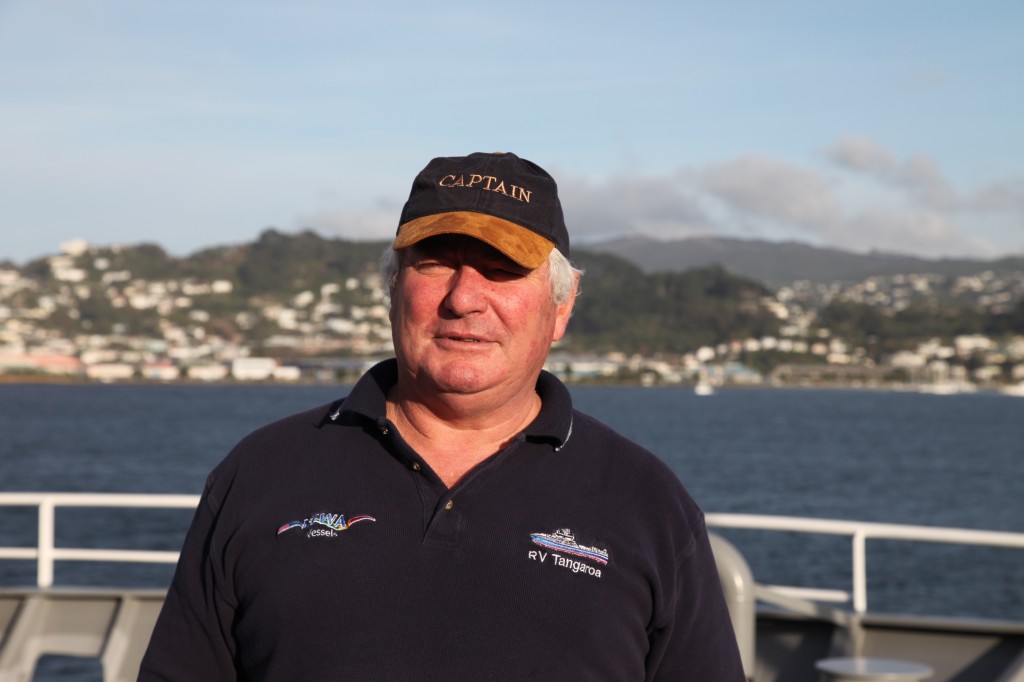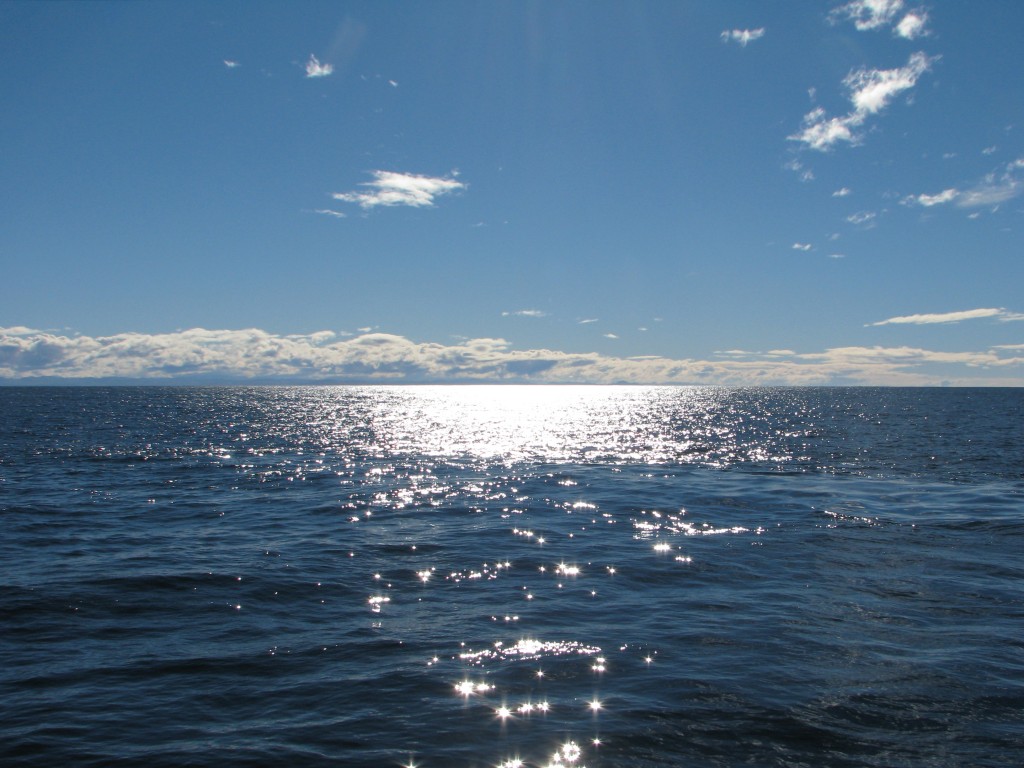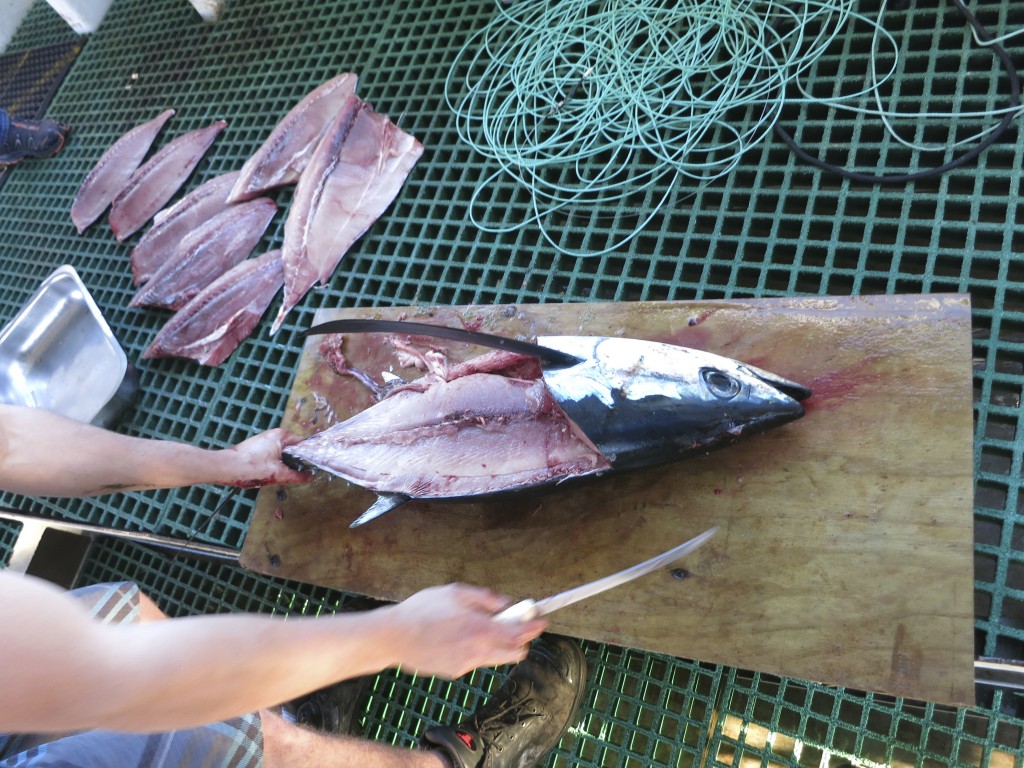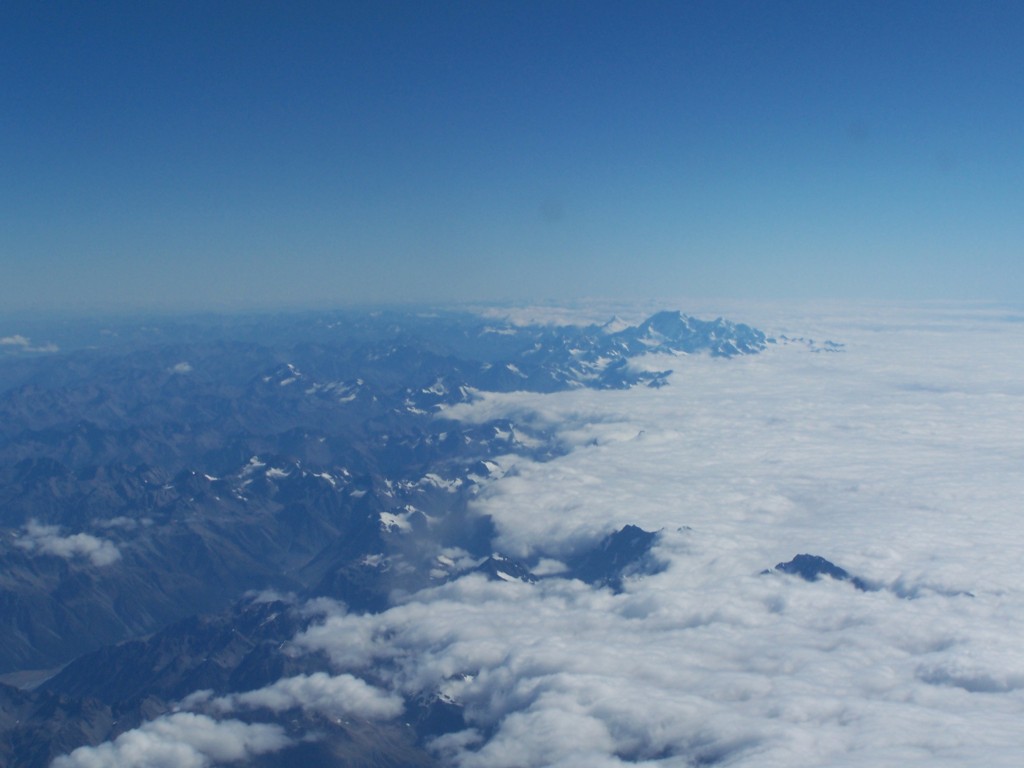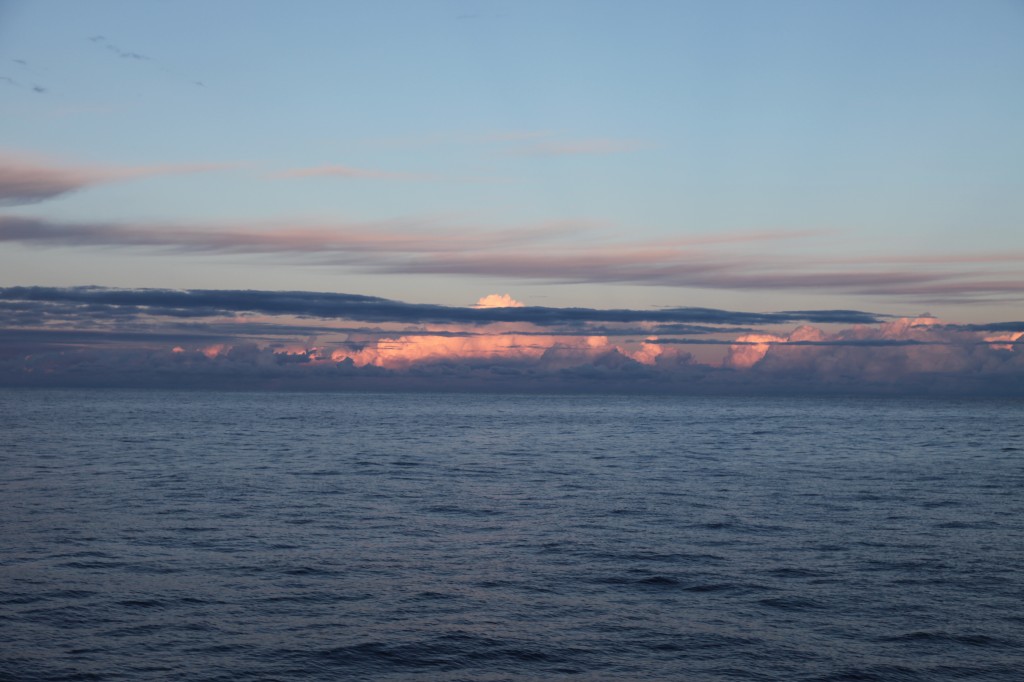Evan Solly has been sailing since he was 15 years old, getting experience by sailing around Nelson, South Island, New Zealand, in a wooden scow, which is a small boat. His grandfather was a sailor, and his great grandfathers on both his mother and father’s side were sailors. His family came to Littleton, New Zealand from England in 1851. Evan has three children, and although one has worked as a cook on a ship, he doesn’t necessarily encourage his children to follow his career choice. There are drawbacks to being a Captain of a ship; you miss out on your kids growing up, you lose your social life, and it is sort of a solo lifestyle. On the positive side, there is a huge diversity to the daily job, and he is always on a learning curve picking up on cutting edge research projects that New Zealand scientists are working on. The Tangaroa is a scientific research ship, it started with fisheries research and expanded into different disciplines. Now it serves atmospheric scientists, geologists, and even undertakes contract work from different countries like Australia, Papua New Guinea, New Caledonia, and Japan. It is the largest scientific ship in New Zealand.
New Zealand is home to only 4 million people, and it is a unique place to live. I asked the Captain what his favorite thing about living in New Zealand was and he was stumped. “It’s home, I guess, taking the drive over the hill into Nelson, and then you’re home, the familiarity.” I guess we could all say the same thing about our homes. He also mentions the diversity, and the variety of mountains, volcanoes, and ocean in the country is easy to envy. He has been with his partner for 34 years, and focuses only on family when he is not on the Tangaroa.
He tells a fascinating story of the psychology of being on a ship. “After 14 days, that’s when itchy and scratchy come out. That’s for both the scientists and the crew.” Well, we were only on the Tangaroa for 9 days, so our party didn’t get that far. His advice for new seafarers? “Embrace it, embrace the lifestyle.” I must admit, personally, I had a romantic view of a life at sea before actually going to sea, and it is a challenge. Especially for people with good balance, because the 2.5 meter swells can really throw you for a loop. Evan takes it all in stride, and manages the crew to boot.
His most fascinating stories come from voyages to Antarctica. The voyages there are weeklong sojourns through ice fields. As I have mentioned before, the Tangaroa is not an icebreaking ship, but can navigate broken ice fields. Evan describes navigating iceberg territory as saturated with caution, because of the vulnerability of the ship and the crew. Of course, one of the biggest dangers is the possibility of hitting an iceberg. Even an iceberg twice the size of a ship cabin can damage the Tangaroa, and help is a long way away. The most dangerous icebergs are those that are bobbing up and down on the surface, the color of the ocean, a deep dark blue, with most of the mass deep below the surface. He says that avoiding icebergs is a sense, and unless you’re in touch with it you don’t know, and it is with experience that you develop the skill in time, even with radar. Some of the icebergs can be 60-80 meters high, and much larger than the ship. It is amazing to know that Antarctica is only a week’s voyage from New Zealand, and I actually cringe from imagining the weather, wind and especially the swells that occurs down at those latitudes. Interestingly enough, where there is really thick ice, the giant swells settle down and there is only the sound of ice scraping against the ship to deal with. I imagined it would be really neat to hear the sound of ice sheets on the ship, but the Captain disagrees. “It’s raucous, the noises running down the side of the hull.” He describes air so clear that the visibility is 300 miles, and mountain peaks far away look very close indeed.
Remembering my bout of seasickness, I asked what the worst case of sickness he had seen was; there was one person who couldn’t eat for 4-5 days, but after that he began eating again. I only went two days without eating, at some point the need for survival outweighs the utter repulsion at the sight of food.
I’ll leave the reader with two of the Captain’s best wildlife sightings. In the first, the Captain was on a ship that deployed a manned submersible off the coast of Kaikoura, South Island, where the water gets very deep very quickly. It was deployed at night, and as the submersible was returning to the surface, the lights illuminated the ocean to a turquoise-green. The actual pinpoints of light weren’t visible, just the glow. Dolphins swimming in the light were phosphorescent, and the effect was surreal. In the second, he was on a ship sailing to Hawaii, on his watch from 4-8 am. He walked out on the bow, looked over the edge, and spotted a glowing jellyfish in the ocean. The sea was as flat as glass, and the stars were reflected in the ocean. One jellyfish would light up, poof, then another, then another, as far as the eye could see. I would say he leads a very nice lifestyle.

